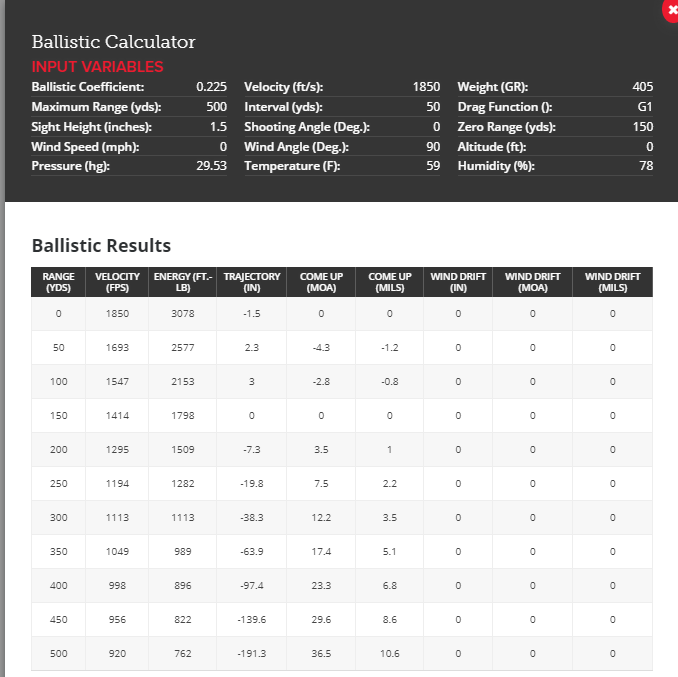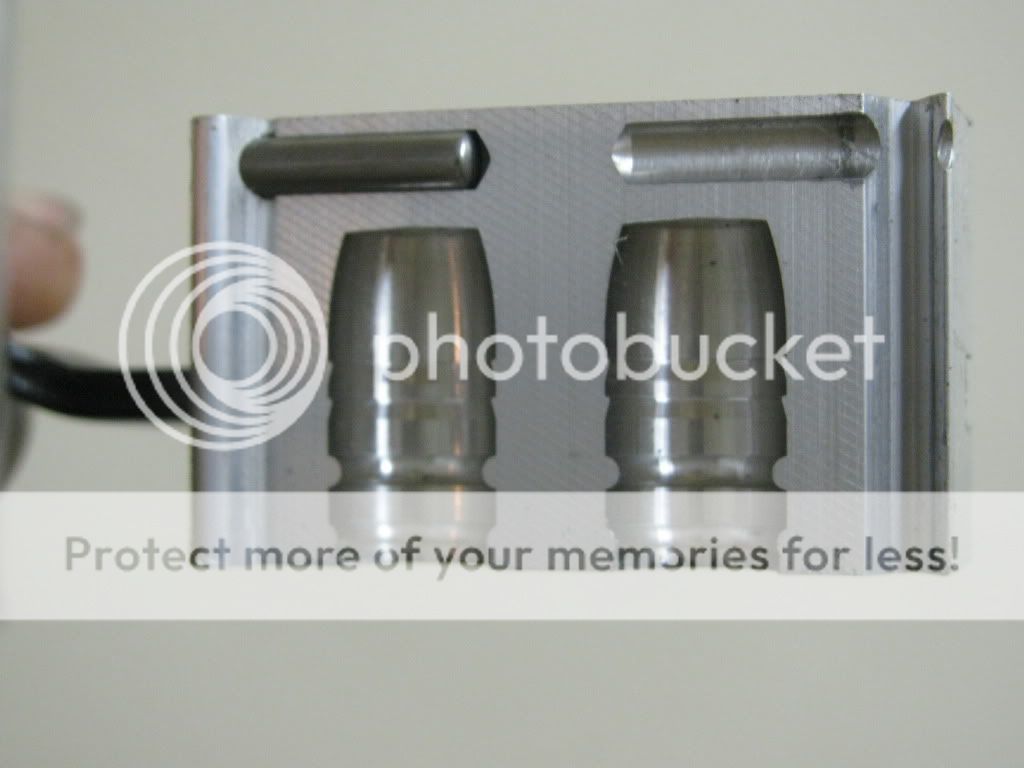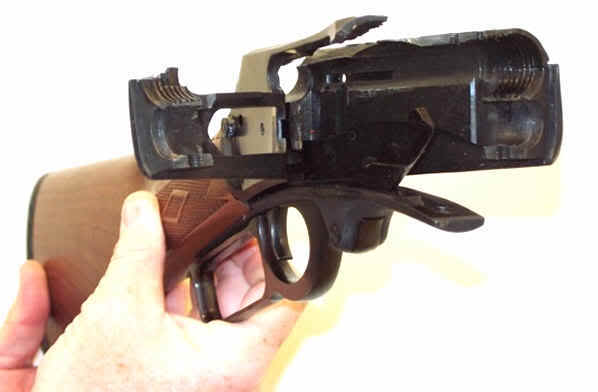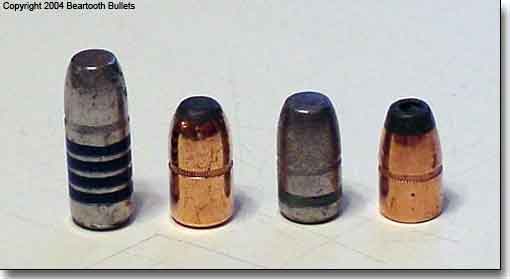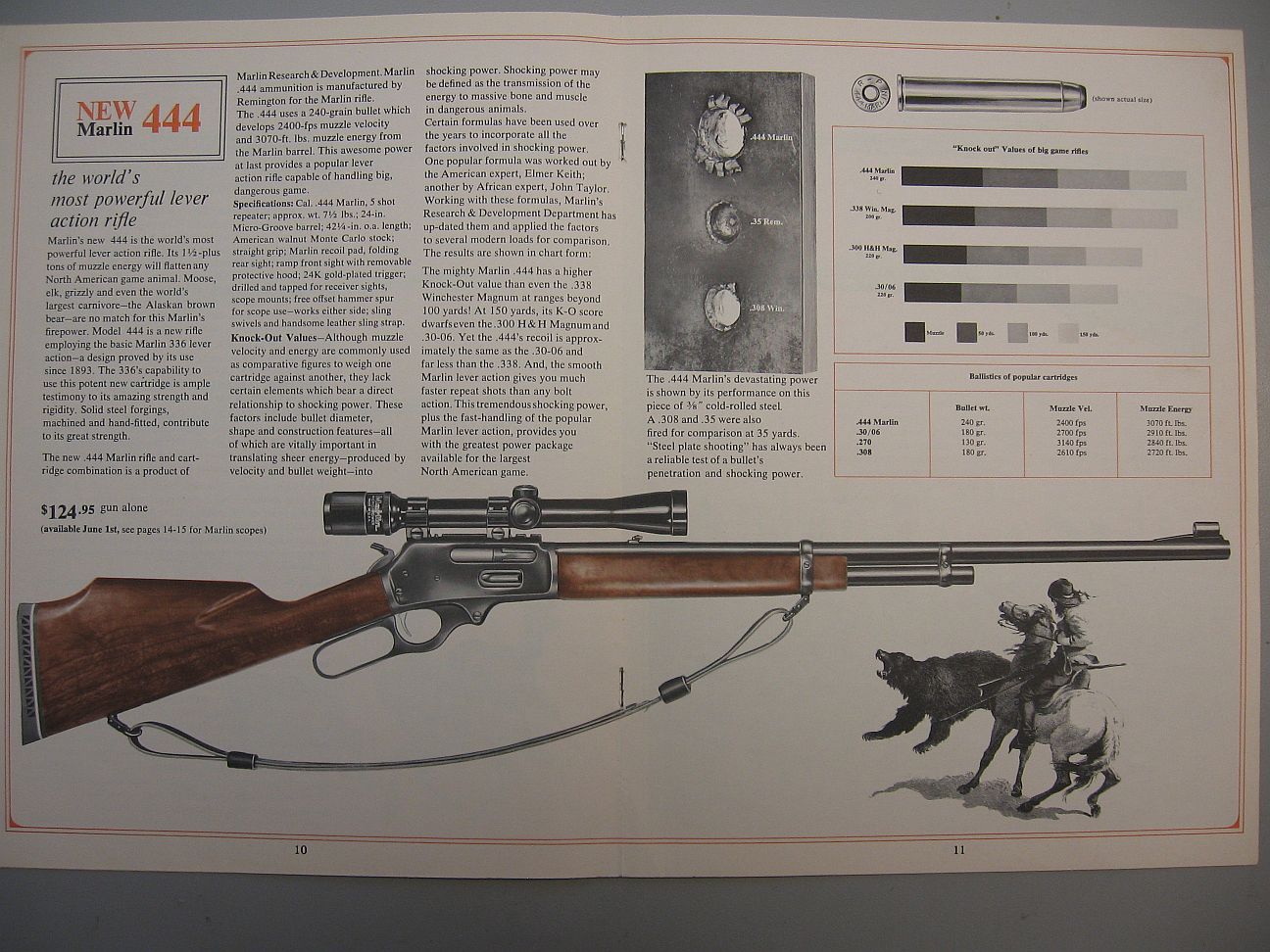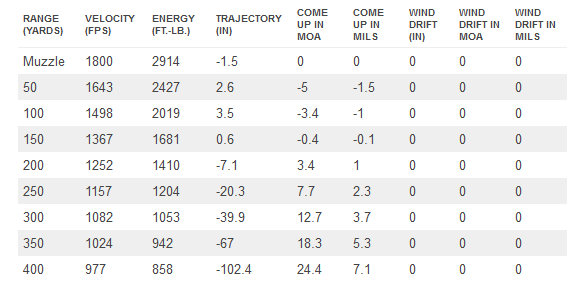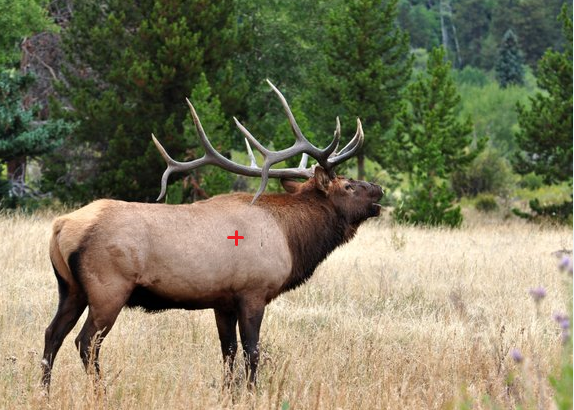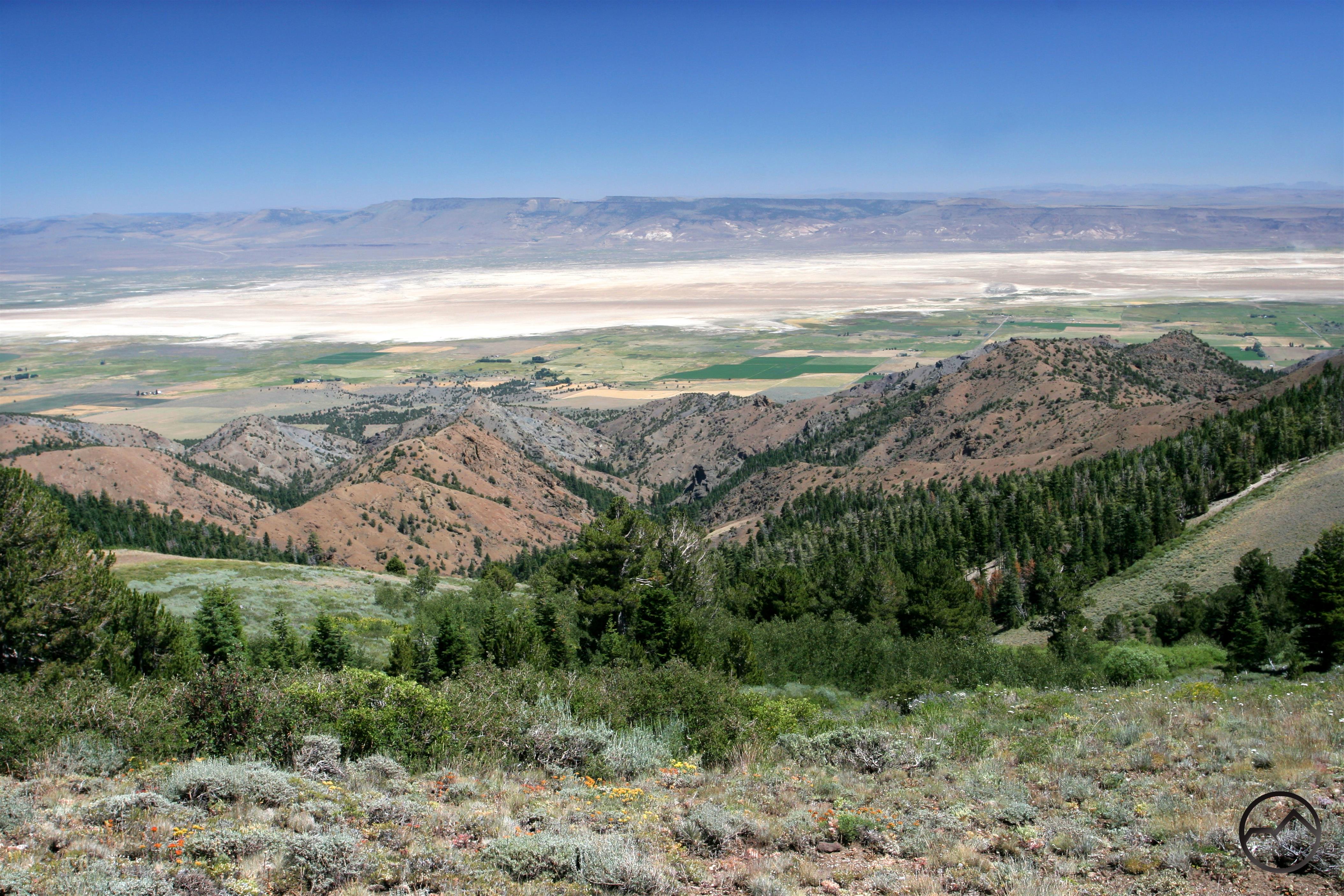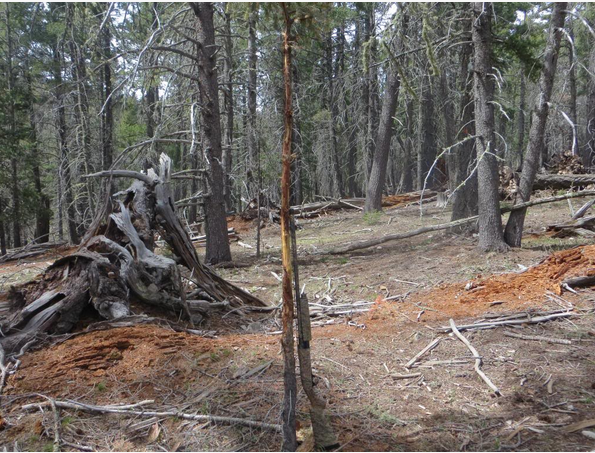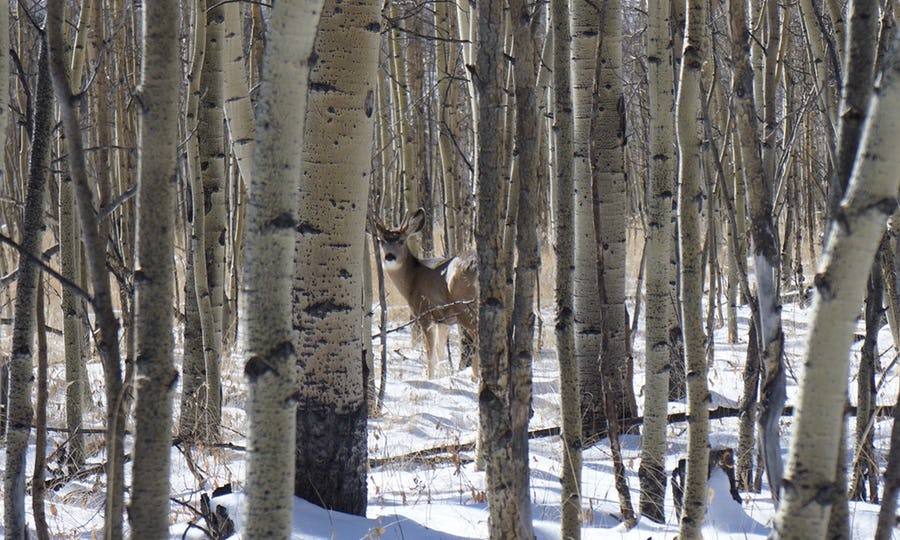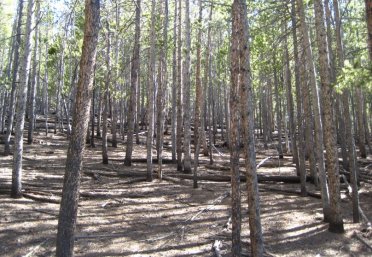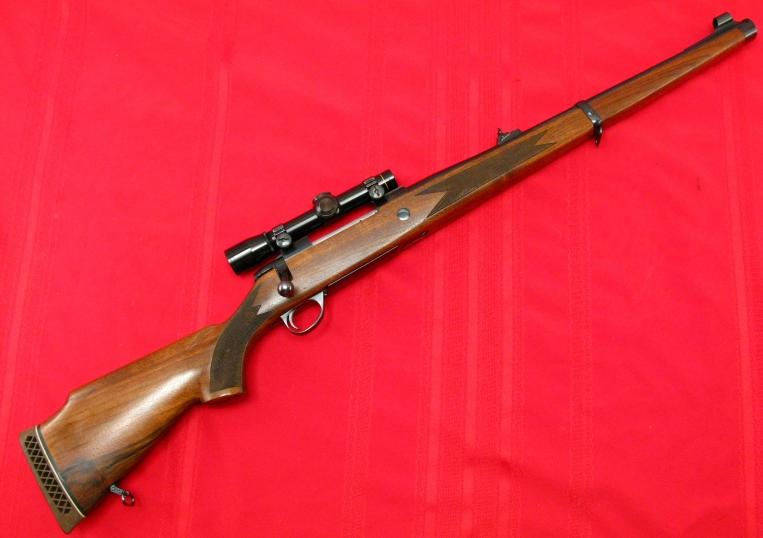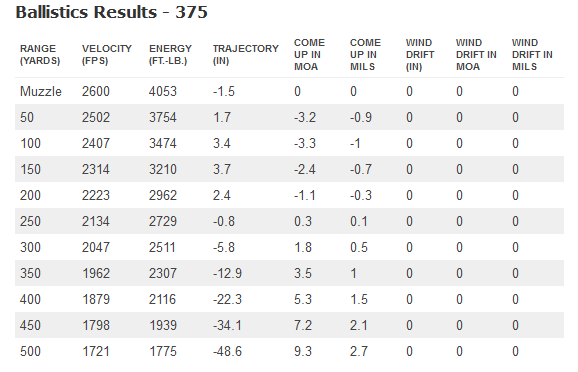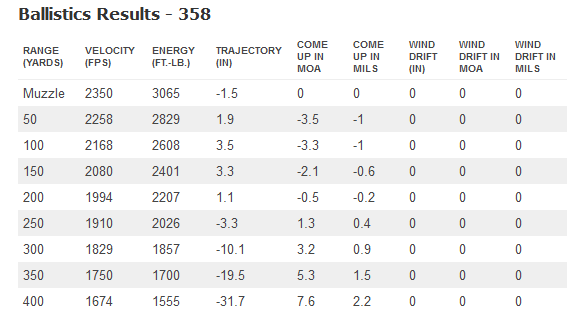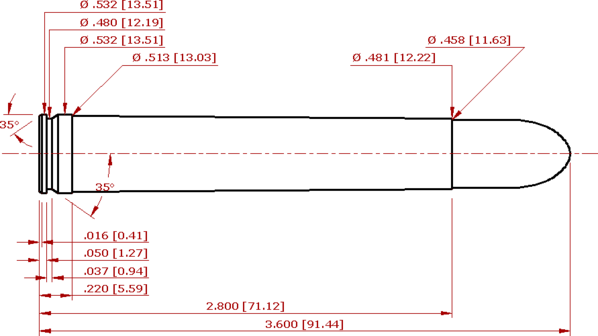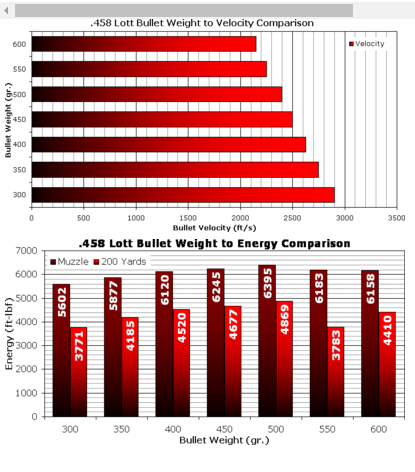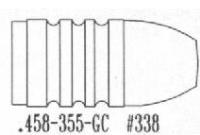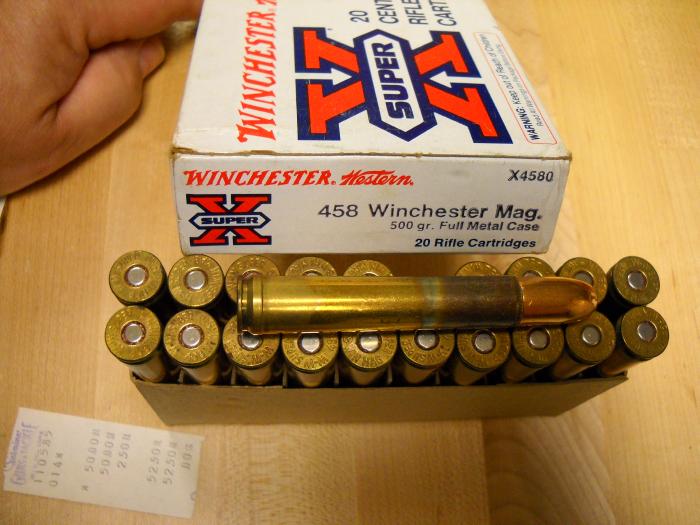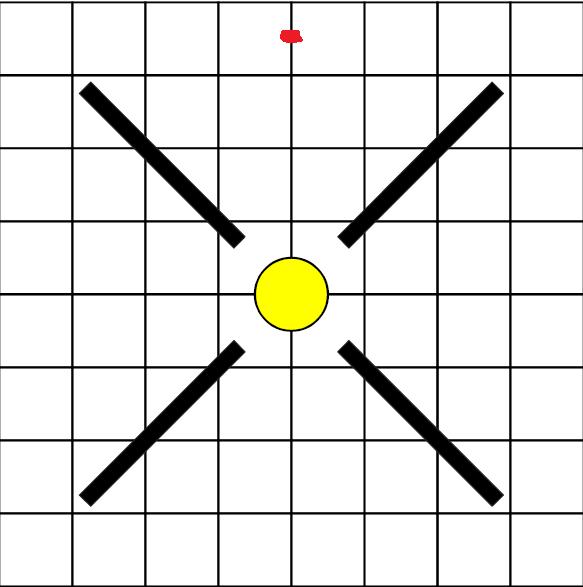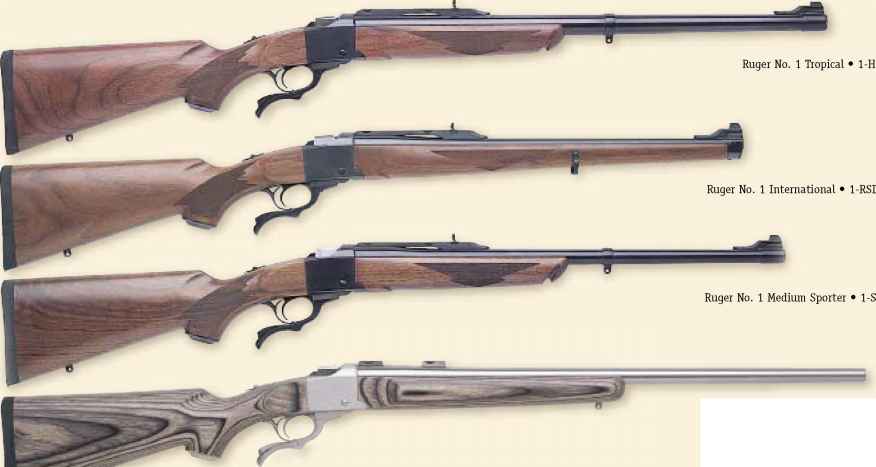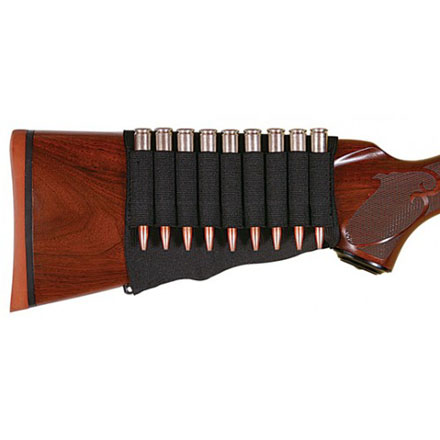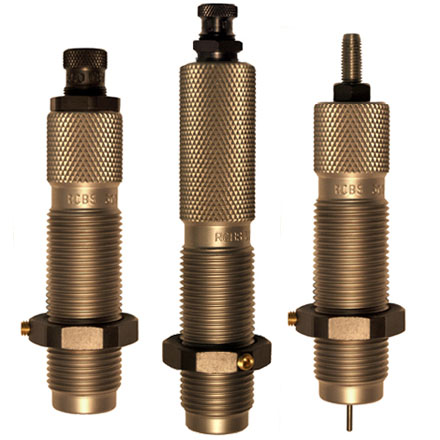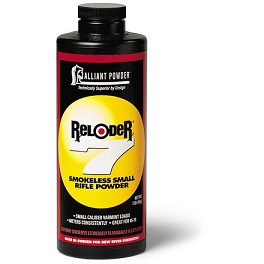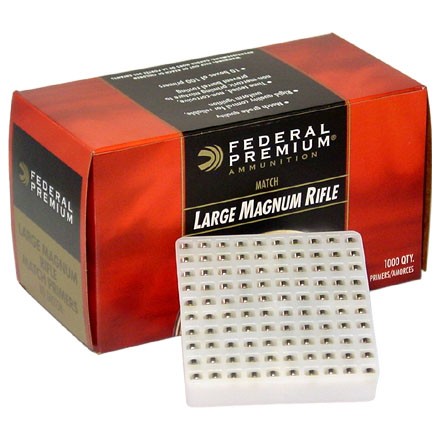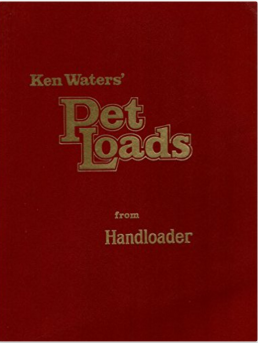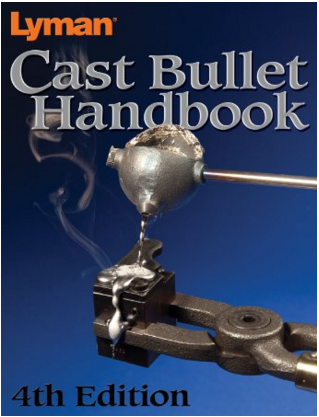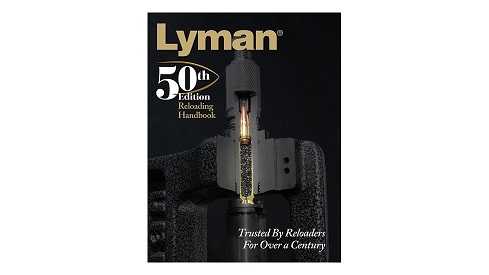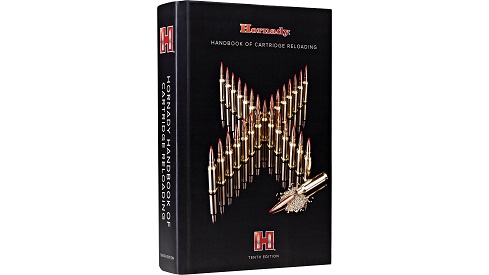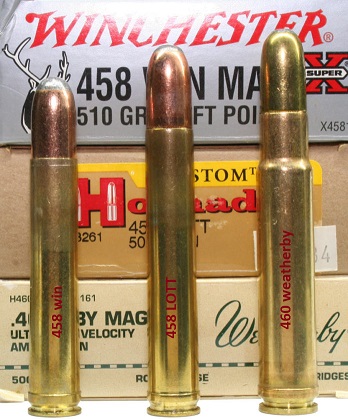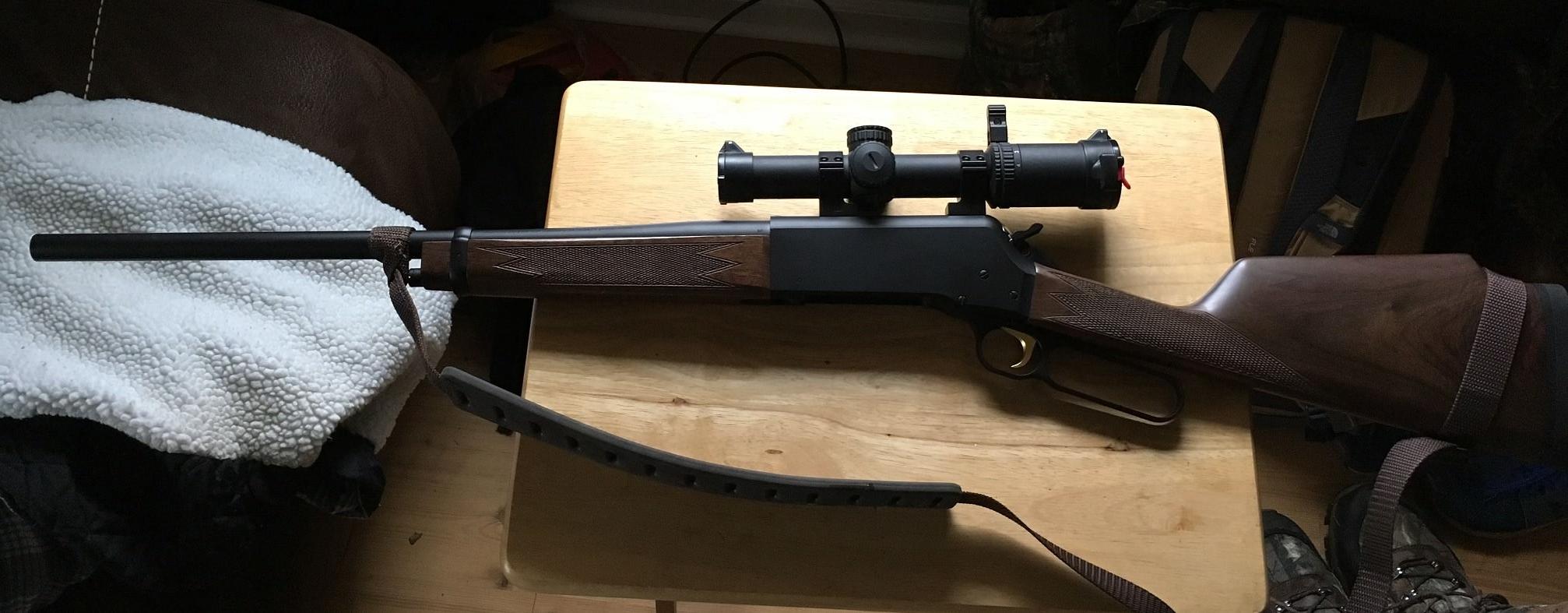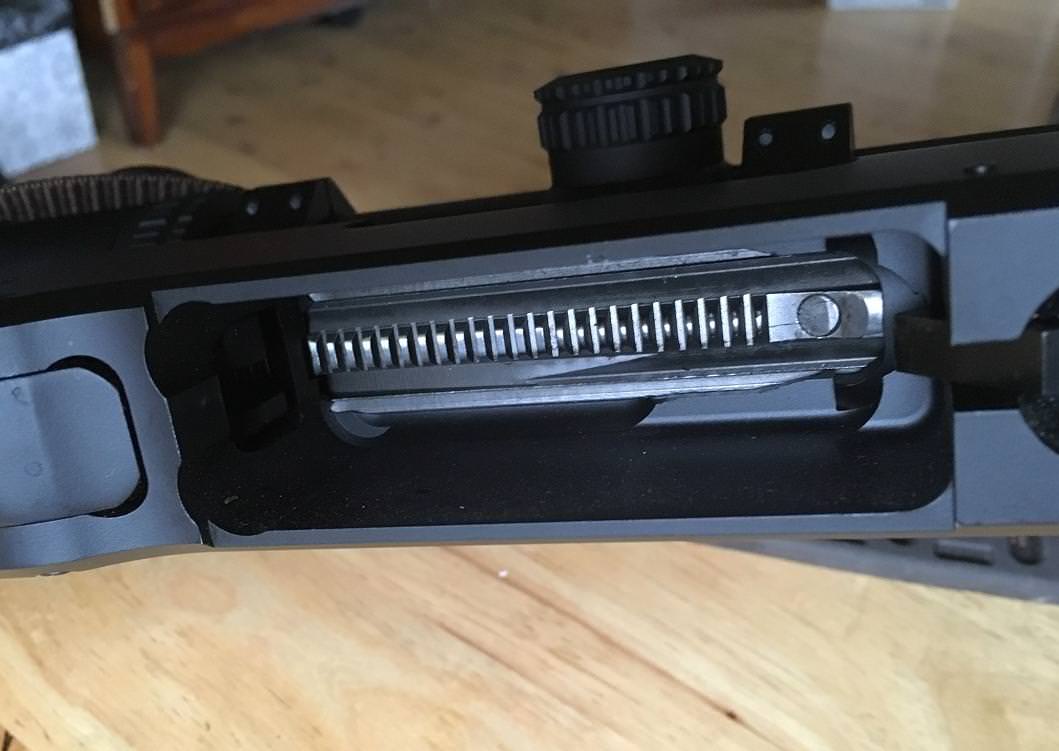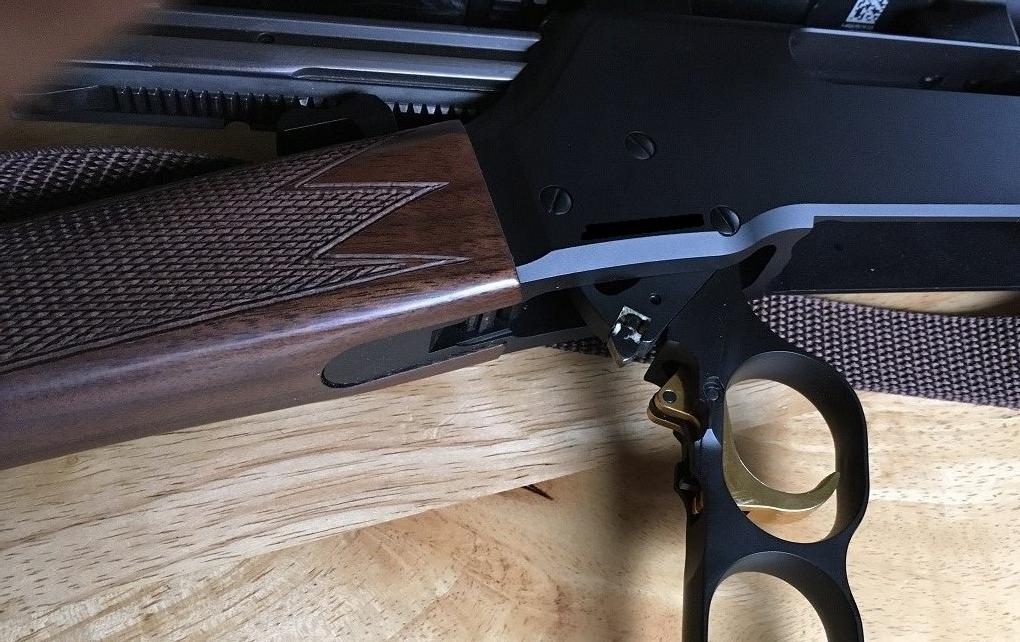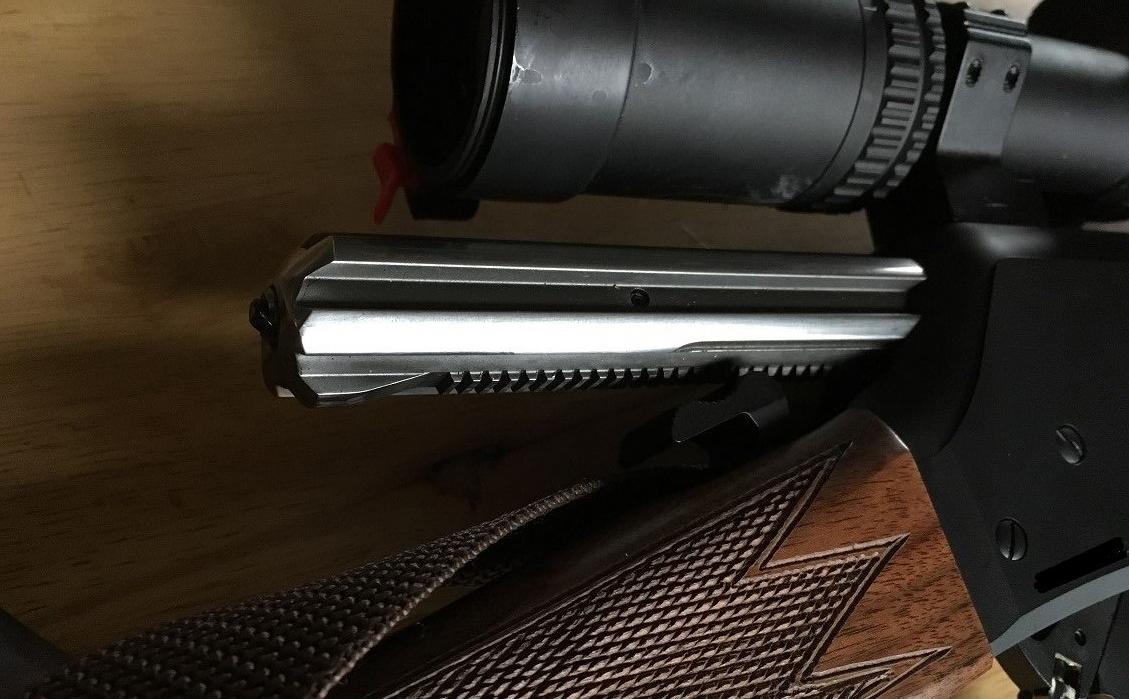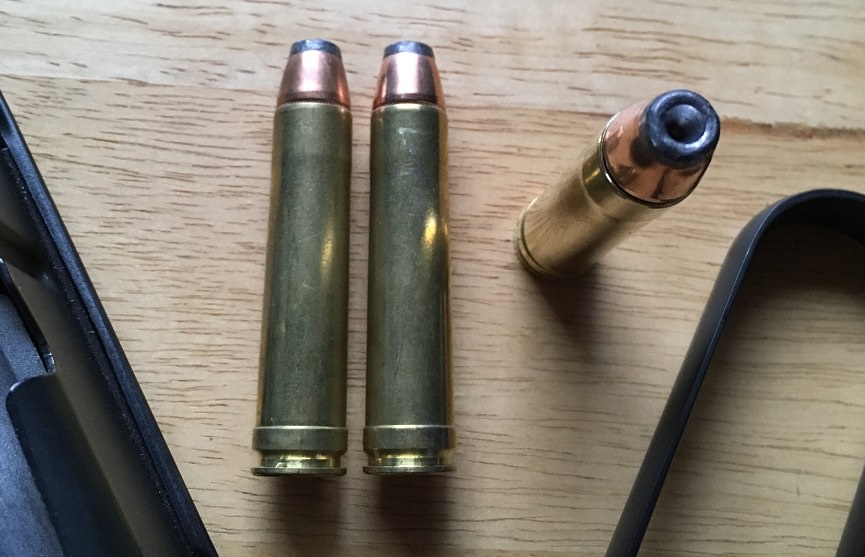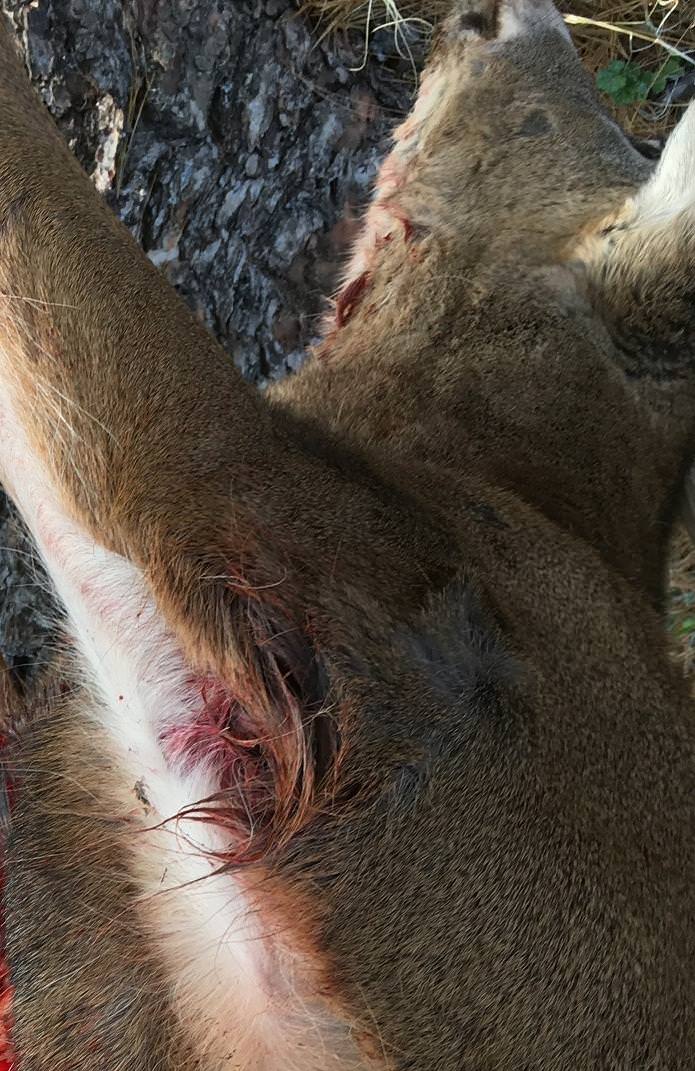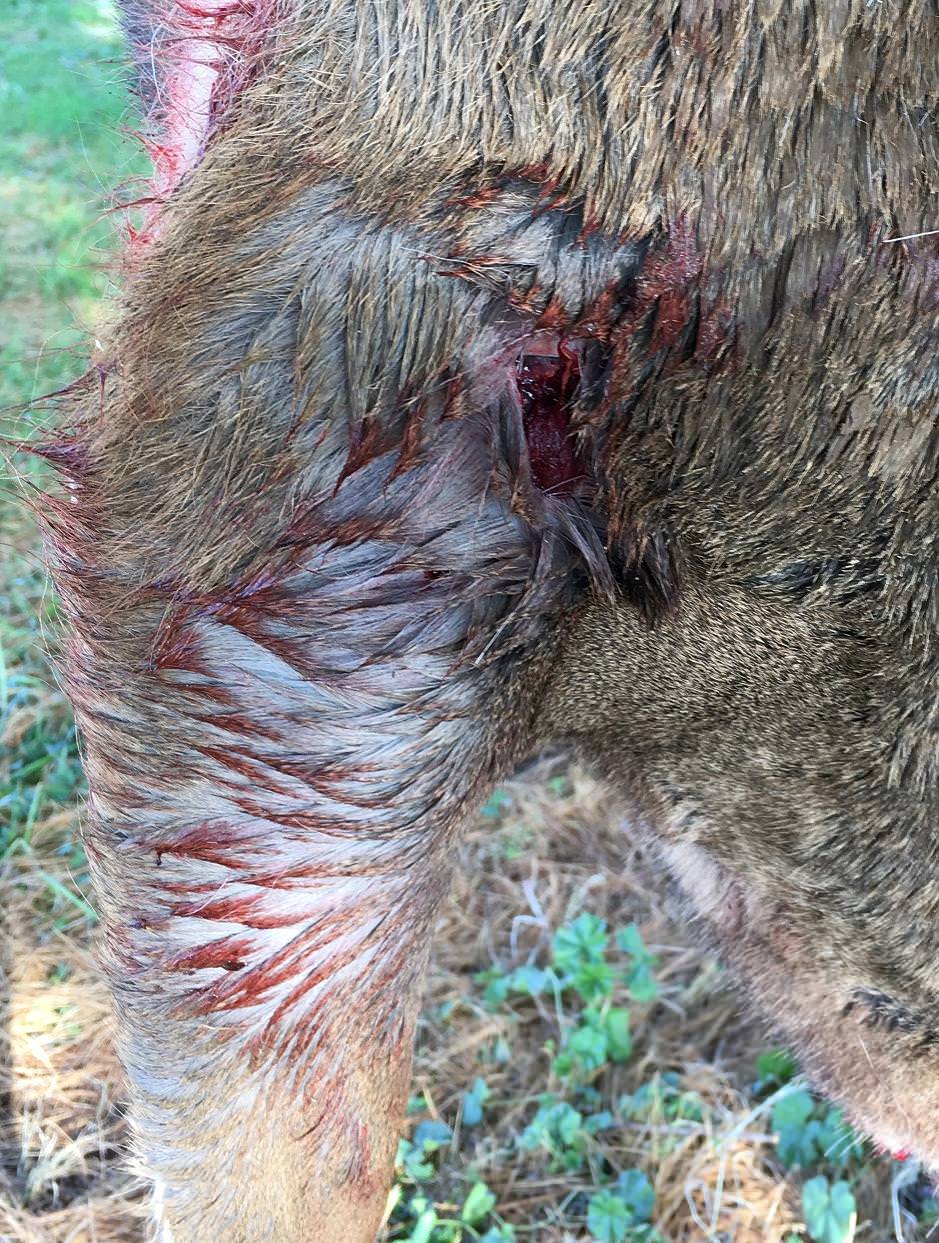some guys feel an attraction to owning a rifle that's got some serious punching power and I'm afraid I'm one of those poor souls.
most of my hunting rifles are .30 caliber or larger and I've got a strong tendency to grab a .338-.458 caliber and something throwing a 250-550 grain bullet, on anything like a serious hunt!
if your willing to use cast lead alloy projectiles keep in mind that the larger the bullet diameter the lower the ratio of surface area to mass is likely to be , and the 458 caliber is the largest
youll have, a great many more options if you handload !
you certainly don,t need to load a 458 caliber rifle to its full potential for every type of game.
if your using the larger capacity, commonly available smokeless powder rifle cartridge caliber's,
theres no game in north america that a well placed 180 grain-220 grain bullet from a 30/06 can't easily kill
theres lots of larger calibers,
but their popularity is rather restricted in comparison to the .45 caliber rifles.
keep in mind thats a significant difference between a rifle thats 100% lethal in skilled hands and one that will shoot cleanly through and exit almost any animal from almost any reasonable angle through the vitals,at ranges under 150 yards.
now shot placement is always critical as is a knowledge of the games anatomy, but I've surely noticed that the 45 calibers get the games instant attention on bullet impact , far more often than the 30 calibers.
both may be 100% lethal in skilled hands but seeing the games instant reaction is confidence building
theres something a bit impressive with seeing a rifle that will shoot thru a thick tree trunk, or shoot thru a deer end to end, and theres little doubt that the larger rifles both look and hit in a way that impresses most people.
I don,t see why more guys don,t take their big bore rifles out hunting especially with reduced loads.
Ive used both my 450 marlin, 45/70, 458 win and 458 LOTT with what amounted to hot 45/70 power level loads and cast gas check bullets, or the fairly cheap,350 grain hornady or remington and speer, 405 grain jacketed bullets, on many deer hog and even a few elk hunts.
theres no need to use max loads even on elk, with a 45/70 or 458 win or 458 lott, and the rifles do a fine job even with reduced loads.
personally I like the 458 win when used at a bit less than most factory ammo power levels , Ive found it works quite well loaded with 405 remington bullets launched at about 2000fps.
now you might be thinking that a 450 marlin or 45/70 might be loaded to those power levels in some rifles and while that might be true, its pushing the limits in a 45/70 or 450 marlin in many rifles,
but the 458 win rifle loaded to that velocity 2000 fps velocity with that 405 grain bullet has done a really good job in my experience, at well under its rated pressure and velocity limits
I load my 450 marlin to a 1800fps level with the same bullets and either cartridge makes a very deadly hunting rifle, but if you like bolt actions I think the 458 wins the better choice if your looking for max power and penetration with only those two choices
Now according to most gun magazine writers the 458 win, went obsolete shortly after they promoted the 458 Lott.
https://www.budsgunshop.com/catalog...rfire/CZ+550+American+Safari+Magnum+.458+Lott
you certainly not going too need a 458 lott or 458 win to hunt elk, but both rifles hand-loaded
to hot 45/70 power levels make excellent thick timber elk rifles where range under 200 yards are the rule and a 400 grain bullet at perhaps 1800 fps-2200 fps make a very effective elk hunting rifle

I would not go that far in proclaiming the 458 wins. demise, but I would buy a 458 LOTT caliber rifle rather than a 458 win if your only going to own one 45 caliber stopping rifle if Africas on your list of hunting areas,simply because the 458 lotts a bit more versatile if you hand load in my opinion, and its easily able to push the heavier 500-600 grain projectiles a bit faster than the 458 win. yet if your realistically hunting only in north America, I can,t think of a single place that a 450 MARLIN caliber BLR would not be my preferred rifle choice, I certainly would rather face a charging brown bear with a 450 marlin BLR properly loaded with 405 soft points , than a bolt action or single shot 458 win. simply because your only going to get one or two shots in a close range encounter and the 450 marlin BLR is fast accurate and handy to use and has more than enough power with properly placed shots. and a second or third shot will be easier with lower recoil and a lever action.
https://kahntrol.com/clamp-on-muzzle-brake/
http://www.reloadersnest.com/query_all.asp?CaliberID=158
http://www.reloadersnest.com/frontpage.asp?CaliberID=158
https://www.budsgunshop.com/catalog/product_info.php/products_id/61416

the best load I found so far is not near the max level, its a 405 grain remington, bullet over a 215 fed primer and 50 grains of IMR3031
1.5" 3 shot groups are very common, with that load.
my rifle looks very similar to this picture I found posted

factory ammo costs between $1.60-$3.00 a shot, reloads would be less than $.70 to as low as $.50 each, on average
saving $15-30 a box of 20 cartridges will pay for the loaded ammo and reload equipment fairly quickly... especially if you get a deal on some used reloading press and powder scale etc.
over the past 5 decades Ive purchased and used and occasionally sold off or traded off dozens of different rifles,
now I rarely regret selling or trading off rifles, as I generally won,t do that with any rifle I find to be particularly useful,
unless I found and tested and own something I think is significantly better at a particular application.
now that does not mean the rifle I traded off or sold may not be 100% functional or accurate, only that I found something similar,
I personally think was better suited to my needs.
example
I purchased a marlin 444 and found it worked really well, but after a decade or so I purchased a very similar,marlin 45/70,
and that 444 marlin found a new owner, I found that a good bit of the 444 marlins perceived lack of accuracy,
was the result of the scope and mount I had on it.
but the 45/70 was more effective, so I did not really regret selling it as it went to a friend that really likes it and takes good care of it.
but after I purchased a browning BLR in 450 marlin I sold my marling 45/70 and had no regrets,
truthfully a 444 marlin will do almost anything the browning BLR can do and the difference in power or accuracy while obviously there,
and demonstratable,is not so significant that, the rifles can not be used interchangeably in most cases, for hunting similar game.
so why change? well its mostly personal preference in my case I like the box magazine, smoother, forward locking lug action,
and slightly better accuracy I get with the browning BLR, and I like the option of a 400 grain jacketed or cast gas check 458 diam bullet at near 1900 fps.
so why change? well its mostly personal preference in my case I like the box magazine, smoother, forward locking lug action,
and slightly better accuracy I get with the browning BLR,
and I like the option of a 400 grain jacketed or cast gas check 458 diam bullet at near 1900 fps.
if I hunt thick timber for deer or elk where ranges seldom exceed about 200 yards I find my 450 marlin caliber Browning BLR,
exceptionally effective if I want more power and range the 458 win or 458 lott certainly provide that option,
but Ive yet to see the need, for more power as the 450 marlin BLR with a hard cast bullet ,shoots clear through an elk at even longer ranges
https://www.midwayusa.com/product/4...marlin-325-grain-flex-tip-expanding-box-of-20
https://www.midwayusa.com/product/6...458-diameter-300-grain-hollow-point-box-of-50
https://www.midwayusa.com/product/1009930320/hornady-reloading-brass-450-marlin-box-of-50
https://www.midwayusa.com/product/713164/rcbs-3-die-set
Re: 450 marlin handloads.
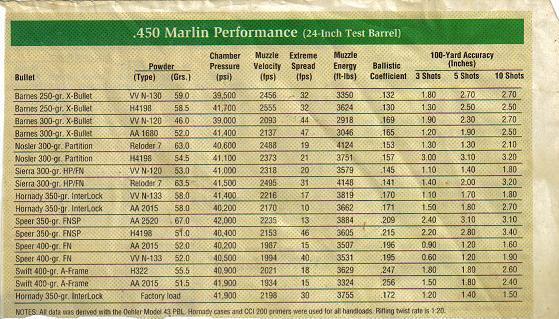
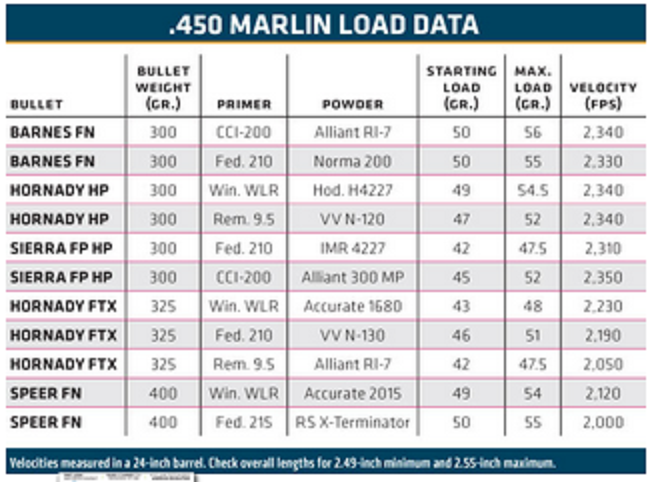
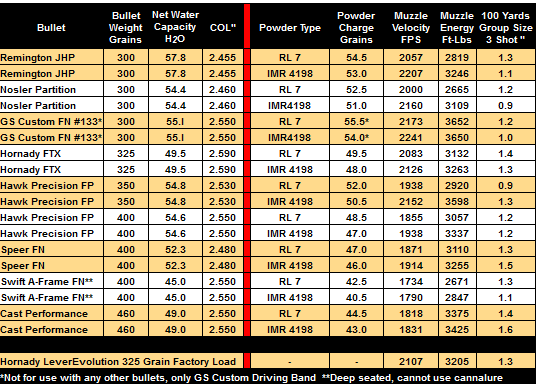
http://en.wikipedia.org/wiki/.458_Lott
http://www.gunsandammo.com/content/the- ... ter-magnum
http://www.shakariconnection.com/458-caliber-rifle.html
http://data.hodgdon.com/cartridge_load.asp
http://www.reloadbench.com/cartridges/458wm.html
http://www.all4shooters.com/en/articles ... mmunition/
http://www.rifleshootermag.com/featured ... index.html
http://www.saami.org/PubResources/CC_Drawings/Rifle/458 Lott.pdf

458 lott.........-375 H&H ..................458 win
BTW 80 grains of VARGET powder a 215 fed primer and a 540 grain cast bullet sized .459 works decent in the 458 lott
http://www.handloads.com/loaddata/defau ... le&Source=
http://www.b-mriflesandcartridges.com/u ... 232013.pdf
http://castboolits.gunloads.com/showthr ... nd-Musings
http://reloadersnest.com/frontpage.asp?CaliberID=157
http://garage.grumpysperformance.co...tance-to-use-hard-cast-lead-projectiles.9875/
http://www.nosler.com/458-winchester
viewtopic.php?f=92&t=11004&p=48594#p48594
1. 540 grain FP GC, 15 Brinell alloy, sized .460, 74 grains WW 748 (lightly compressed charge), WLR primer, 3.3 inch OAL, velocity 1870 fps. Groups: 1.23, 1.09
2. 540 grain FP GC, 15 Brinell alloy, sized .460, 74 grains WW 760 (lightly compressed charge), WLR primer, 3.3 inch OAL, velocity 1700 fps. Groups: 0.8
3. 540 grain FP GC, 15 Brinell alloy, sized .460, 46 grains AA 5744 with one packing peanut, WLR primer, 3.3 inch OAL, velocity 1750 fps. Groups: 1.65
read the linked info below, this is why a hard cast 550 grain bullet pushed from a 458LOTT has excellent penetration
most of my hunting rifles are .30 caliber or larger and I've got a strong tendency to grab a .338-.458 caliber and something throwing a 250-550 grain bullet, on anything like a serious hunt!
if your willing to use cast lead alloy projectiles keep in mind that the larger the bullet diameter the lower the ratio of surface area to mass is likely to be , and the 458 caliber is the largest
youll have, a great many more options if you handload !
you certainly don,t need to load a 458 caliber rifle to its full potential for every type of game.
if your using the larger capacity, commonly available smokeless powder rifle cartridge caliber's,
theres no game in north america that a well placed 180 grain-220 grain bullet from a 30/06 can't easily kill
theres lots of larger calibers,
but their popularity is rather restricted in comparison to the .45 caliber rifles.
keep in mind thats a significant difference between a rifle thats 100% lethal in skilled hands and one that will shoot cleanly through and exit almost any animal from almost any reasonable angle through the vitals,at ranges under 150 yards.
now shot placement is always critical as is a knowledge of the games anatomy, but I've surely noticed that the 45 calibers get the games instant attention on bullet impact , far more often than the 30 calibers.
both may be 100% lethal in skilled hands but seeing the games instant reaction is confidence building
theres something a bit impressive with seeing a rifle that will shoot thru a thick tree trunk, or shoot thru a deer end to end, and theres little doubt that the larger rifles both look and hit in a way that impresses most people.
I don,t see why more guys don,t take their big bore rifles out hunting especially with reduced loads.
Ive used both my 450 marlin, 45/70, 458 win and 458 LOTT with what amounted to hot 45/70 power level loads and cast gas check bullets, or the fairly cheap,350 grain hornady or remington and speer, 405 grain jacketed bullets, on many deer hog and even a few elk hunts.
theres no need to use max loads even on elk, with a 45/70 or 458 win or 458 lott, and the rifles do a fine job even with reduced loads.
personally I like the 458 win when used at a bit less than most factory ammo power levels , Ive found it works quite well loaded with 405 remington bullets launched at about 2000fps.
now you might be thinking that a 450 marlin or 45/70 might be loaded to those power levels in some rifles and while that might be true, its pushing the limits in a 45/70 or 450 marlin in many rifles,
but the 458 win rifle loaded to that velocity 2000 fps velocity with that 405 grain bullet has done a really good job in my experience, at well under its rated pressure and velocity limits
I load my 450 marlin to a 1800fps level with the same bullets and either cartridge makes a very deadly hunting rifle, but if you like bolt actions I think the 458 wins the better choice if your looking for max power and penetration with only those two choices
Now according to most gun magazine writers the 458 win, went obsolete shortly after they promoted the 458 Lott.
https://www.budsgunshop.com/catalog...rfire/CZ+550+American+Safari+Magnum+.458+Lott
you certainly not going too need a 458 lott or 458 win to hunt elk, but both rifles hand-loaded
to hot 45/70 power levels make excellent thick timber elk rifles where range under 200 yards are the rule and a 400 grain bullet at perhaps 1800 fps-2200 fps make a very effective elk hunting rifle

I would not go that far in proclaiming the 458 wins. demise, but I would buy a 458 LOTT caliber rifle rather than a 458 win if your only going to own one 45 caliber stopping rifle if Africas on your list of hunting areas,simply because the 458 lotts a bit more versatile if you hand load in my opinion, and its easily able to push the heavier 500-600 grain projectiles a bit faster than the 458 win. yet if your realistically hunting only in north America, I can,t think of a single place that a 450 MARLIN caliber BLR would not be my preferred rifle choice, I certainly would rather face a charging brown bear with a 450 marlin BLR properly loaded with 405 soft points , than a bolt action or single shot 458 win. simply because your only going to get one or two shots in a close range encounter and the 450 marlin BLR is fast accurate and handy to use and has more than enough power with properly placed shots. and a second or third shot will be easier with lower recoil and a lever action.
https://kahntrol.com/clamp-on-muzzle-brake/
http://www.reloadersnest.com/query_all.asp?CaliberID=158
http://www.reloadersnest.com/frontpage.asp?CaliberID=158
https://www.budsgunshop.com/catalog/product_info.php/products_id/61416

the best load I found so far is not near the max level, its a 405 grain remington, bullet over a 215 fed primer and 50 grains of IMR3031
1.5" 3 shot groups are very common, with that load.
my rifle looks very similar to this picture I found posted

factory ammo costs between $1.60-$3.00 a shot, reloads would be less than $.70 to as low as $.50 each, on average
saving $15-30 a box of 20 cartridges will pay for the loaded ammo and reload equipment fairly quickly... especially if you get a deal on some used reloading press and powder scale etc.
over the past 5 decades Ive purchased and used and occasionally sold off or traded off dozens of different rifles,
now I rarely regret selling or trading off rifles, as I generally won,t do that with any rifle I find to be particularly useful,
unless I found and tested and own something I think is significantly better at a particular application.
now that does not mean the rifle I traded off or sold may not be 100% functional or accurate, only that I found something similar,
I personally think was better suited to my needs.
example
I purchased a marlin 444 and found it worked really well, but after a decade or so I purchased a very similar,marlin 45/70,
and that 444 marlin found a new owner, I found that a good bit of the 444 marlins perceived lack of accuracy,
was the result of the scope and mount I had on it.
but the 45/70 was more effective, so I did not really regret selling it as it went to a friend that really likes it and takes good care of it.
but after I purchased a browning BLR in 450 marlin I sold my marling 45/70 and had no regrets,
truthfully a 444 marlin will do almost anything the browning BLR can do and the difference in power or accuracy while obviously there,
and demonstratable,is not so significant that, the rifles can not be used interchangeably in most cases, for hunting similar game.
so why change? well its mostly personal preference in my case I like the box magazine, smoother, forward locking lug action,
and slightly better accuracy I get with the browning BLR, and I like the option of a 400 grain jacketed or cast gas check 458 diam bullet at near 1900 fps.
so why change? well its mostly personal preference in my case I like the box magazine, smoother, forward locking lug action,
and slightly better accuracy I get with the browning BLR,
and I like the option of a 400 grain jacketed or cast gas check 458 diam bullet at near 1900 fps.
if I hunt thick timber for deer or elk where ranges seldom exceed about 200 yards I find my 450 marlin caliber Browning BLR,
exceptionally effective if I want more power and range the 458 win or 458 lott certainly provide that option,
but Ive yet to see the need, for more power as the 450 marlin BLR with a hard cast bullet ,shoots clear through an elk at even longer ranges
https://www.midwayusa.com/product/4...marlin-325-grain-flex-tip-expanding-box-of-20
https://www.midwayusa.com/product/6...458-diameter-300-grain-hollow-point-box-of-50
https://www.midwayusa.com/product/1009930320/hornady-reloading-brass-450-marlin-box-of-50
https://www.midwayusa.com/product/713164/rcbs-3-die-set
Re: 450 marlin handloads.



http://en.wikipedia.org/wiki/.458_Lott
http://www.gunsandammo.com/content/the- ... ter-magnum
http://www.shakariconnection.com/458-caliber-rifle.html
http://data.hodgdon.com/cartridge_load.asp
http://www.reloadbench.com/cartridges/458wm.html
http://www.all4shooters.com/en/articles ... mmunition/
http://www.rifleshootermag.com/featured ... index.html
http://www.saami.org/PubResources/CC_Drawings/Rifle/458 Lott.pdf

458 lott.........-375 H&H ..................458 win
BTW 80 grains of VARGET powder a 215 fed primer and a 540 grain cast bullet sized .459 works decent in the 458 lott
http://www.handloads.com/loaddata/defau ... le&Source=
http://www.b-mriflesandcartridges.com/u ... 232013.pdf
http://castboolits.gunloads.com/showthr ... nd-Musings
http://reloadersnest.com/frontpage.asp?CaliberID=157
http://garage.grumpysperformance.co...tance-to-use-hard-cast-lead-projectiles.9875/
http://www.nosler.com/458-winchester
viewtopic.php?f=92&t=11004&p=48594#p48594
1. 540 grain FP GC, 15 Brinell alloy, sized .460, 74 grains WW 748 (lightly compressed charge), WLR primer, 3.3 inch OAL, velocity 1870 fps. Groups: 1.23, 1.09
2. 540 grain FP GC, 15 Brinell alloy, sized .460, 74 grains WW 760 (lightly compressed charge), WLR primer, 3.3 inch OAL, velocity 1700 fps. Groups: 0.8
3. 540 grain FP GC, 15 Brinell alloy, sized .460, 46 grains AA 5744 with one packing peanut, WLR primer, 3.3 inch OAL, velocity 1750 fps. Groups: 1.65
read the linked info below, this is why a hard cast 550 grain bullet pushed from a 458LOTT has excellent penetration
PENETRATION: THE 45-70 & 458 MAGNUMS
The following article is based on bullet penetration test results as measured in water-saturated penetration materials (wet newspapers). Water is the primary substance of life, and constitutes about 90% of the content of all mammals. I have observed that some "testers" have chosen wood boards or dry newspapers for penetration testing material, and this is a very poor choice, which in no way simulates the characteristics of a bullet impact with animal flesh. Wood tends to channel the bullet path, and is less demonstrative of the terminal instabilities inherent to non-expanding bullets when impacting game animals, and is thus an inferior material for the testing of bullet penetration characteristics. Water-saturated penetration materials such as newspapers or ballistic gelatin are far superior with regards to their ability to demonstrate the terminal instabilities that typically occur when non-expanding bullets impact live animal flesh. - Randy Garrett
There are few things in the world of ballistics less well understood than the issues relating to comparative penetration. It is commonly believed that the faster one drives a solid bullet, the deeper the penetration. We see this all the time in the various attempts, via new calibers, to achieve higher velocity for improved performance on heavy game. The current rage among big bore shooters seems to be the 458 Lott, since it achieves a good 200-300 fps higher velocity than the 458 Winchester Magnum. It is claimed that the new 458 Lott is an improvement over the 458 Winchester Magnum since its higher velocity supposedly results in more lethal impact-effect and deeper penetration. This, it is claimed, is just the ticket for busting the heaviest game. Of course, the new 458 Lott also achieves greater kinetic energy as a result of its higher velocity, and this is also a convincing characteristic for those brave souls in pursuit of the heaviest game.
Despite all the impressive "science" deployed to reinforce the assertion that higher speed projectiles are more capable of inflicting the deep penetration and impact-effect required to reliably anchor heavy game, one finds that these assertions simply do not withstand common sense, repeatable penetration testing. In fact, if one conducts these tests, one finds that there is nothing that can be observed which supports the assertion that the faster one drives non-expanding solids the deeper they penetrate.
Very interestingly, if one takes the Hornady 500-grain .458 diameter solid bullet and compares the penetration that results from impact speeds varying from about 1500-fps to 2500-fps, one finds that the higher impact speeds produce the least penetration. When driven to about 1500-fps (as the 45-70 will do) one finds that such solids produce nearly 6-feet of penetration in wet newspapers. When the same bullet is driven to about 2100-fps (as is characteristic of the 458 Winchester Magnum) one finds that the penetration is reduced to about 4 to 4 and 1/2 feet. When one tests the same bullet at 2300-2400 fps (as is characteristic of the 458 Lott) one finds that the penetration comes up nearly 20% short of that produced by the 458 Winchester. And when one tests the same bullet at the blistering speeds characteristic of the mighty 460 Weatherby Magnum, one finds that the penetration achieved is the most shallow produced by the various 458s.
What is apparent from testing is that penetration stops increasing at impact speeds above about 1250-1300 fps. When the impact speeds significantly surpass about 1600-fps, there is a very definite and measurable decrease in penetration depth. This raises some interesting issues regarding the relationship between kinetic energy generation and impact-effect. Although higher velocity projectiles always generate more kinetic energy they clearly do not produce deeper penetration, and when the velocities reach the levels common to today's magnums, the increases in velocity result in significantly reduced penetration. Simply stated, the faster they strike the faster they stop.
Fortunately for all of us who shoot the 45-70, it can be considered to be the deepest penetrating of the various 458 calibers. This is not due to any particular inherent superiority, but due to the 45-70's "inability" to achieve the velocity with heavy bullets that leads to decreases in penetration. The reasons why high impact speeds reduce penetration are not well understood. However, anyone who takes the time to run comparative penetration tests will find that those of us who pack a good 45-70 with heavy bullets need not take a back seat to any other 458 caliber, especially when the game is heavy and the penetration requirements are great.
- Randy Garrett
Last edited by a moderator:

